The clown anemonefish (Amphiprion ocellaris) is probably the world’s most recognizable marine fish and is also known as the ocellaris clownfish, false percula clownfish, and common clownfish. The false percula name comes from the fact that it closely resembles the percula or orange clownfish (Amphiprion percula). The clown anemonefish is the species featured in Finding Nemo and Finding Dory. They’re also a good beginner fish for saltwater aquarists as captive bred specimens are hardy and readily available.
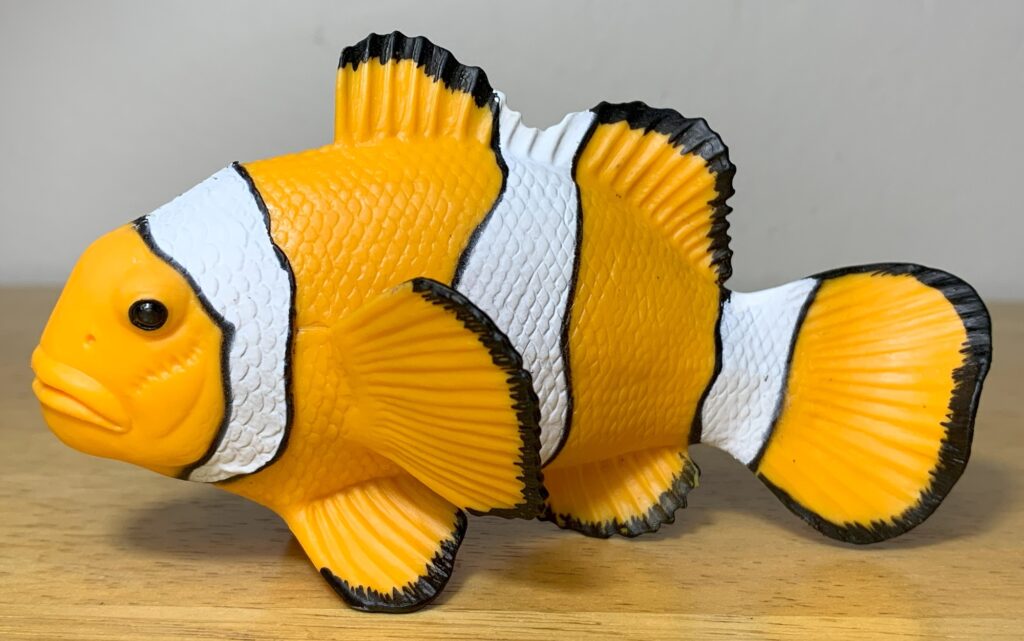
Members of the Amphiprion genus are known as clownfish or anemonefish and are well known for the mutually beneficial relationship that they have with sea anemones. The fish live and hide within the stinging anemone while also protecting it from predators and keeping it clean. Clownfish live in groups consisting of a male and female pair and several non-breeding males. Females are larger than males and dominant. When the female disappears from the group the dominant male will change sex to female and assume her position while the next highest-ranking male will become the breeding male. The ocellaris clownfish is found in coral reefs in the Indo-West Pacific, from the Ryukyu Islands of Japan throughout southeast Asia to northwest Australia.
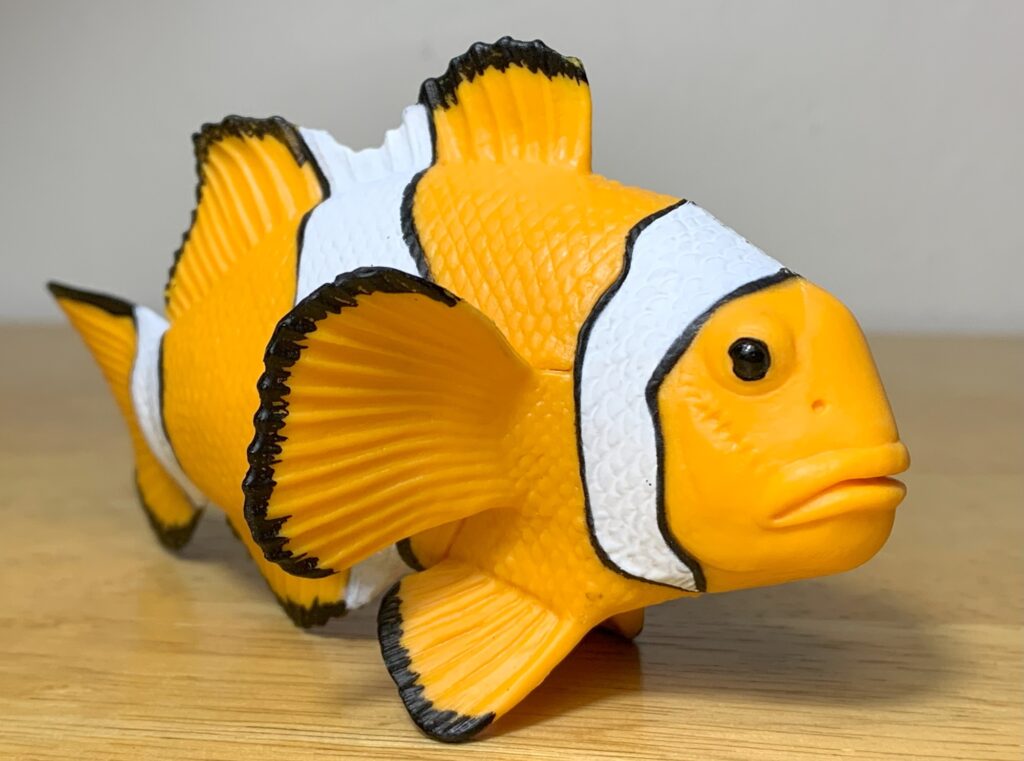
Today we’re looking at the 2017 Safari Ltd. Incredible Creatures clown anemonefish. I’m titling the review with the name that Safari labeled the figure but tagging the toy as an ocellaris clownfish because that’s what every other review of the species is tagged as. The figure measures 4.5” (11.43) in total length while the actual ocellaris clownfish reaches a maximum length of 4.3” (11 cm). The figure is hollow with thin, pliable fins, and can stand upright with the aid of its pelvic and caudal fins. After reviewing and photographing three fish that cannot stand this one represented a nice change of pace.
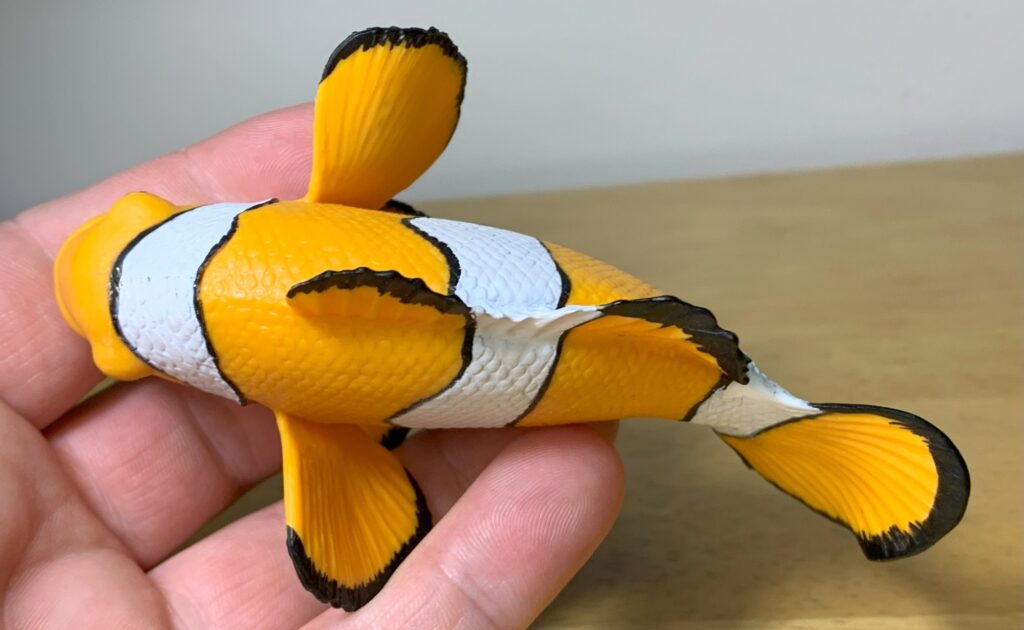
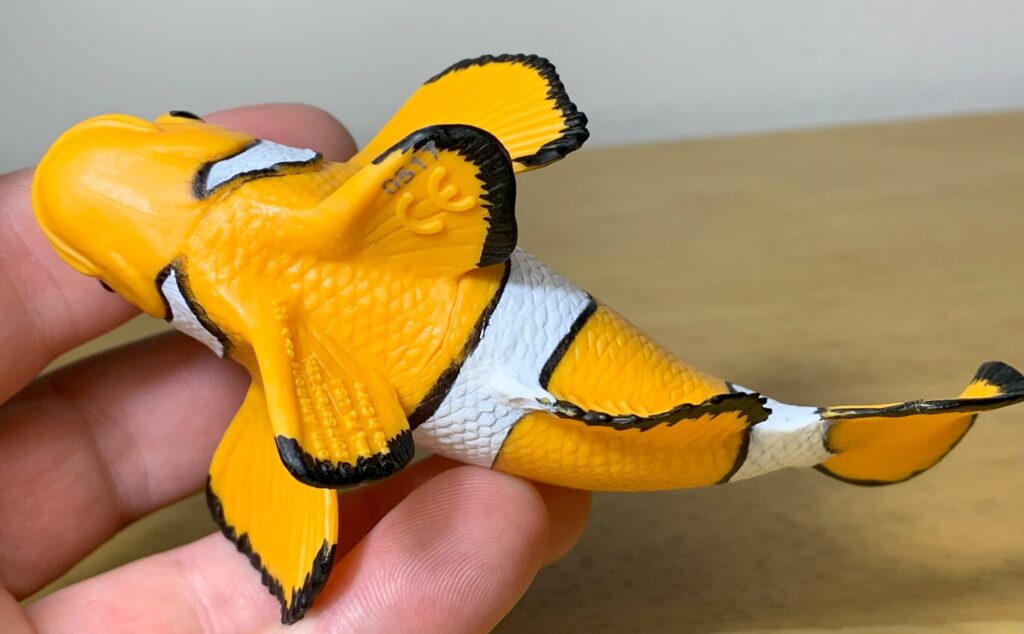
Clown anemonefish always appear in motion, moving in and out of their anemones with their bodies twisting and turning and their large pectoral fins gently waving about. Safari does an admirable job of capturing that motion with this toy. The fins are sculpted with gentle undulations, and the body is curved slightly towards the left.
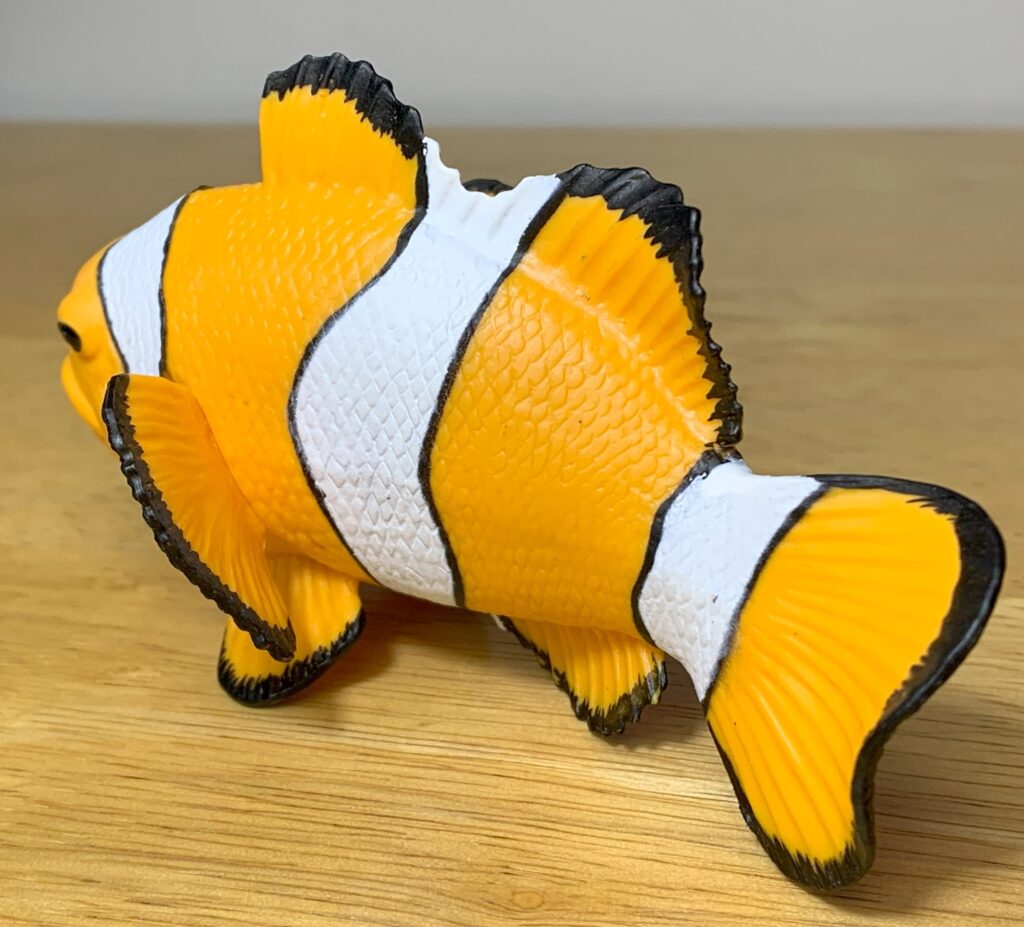
The body is laterally compressed, oval shaped, compact, and robust. The head is large with fleshy lips and lateral line pits can be seen along the cheeks, but no indication of a lateral line is sculpted along the body. The spine and soft ray count on the dorsal and anal fins are within the correct range with individual spines and rays well defined. The face is smooth, but the body is covered with fine, overlapping scales that are individually well defined.
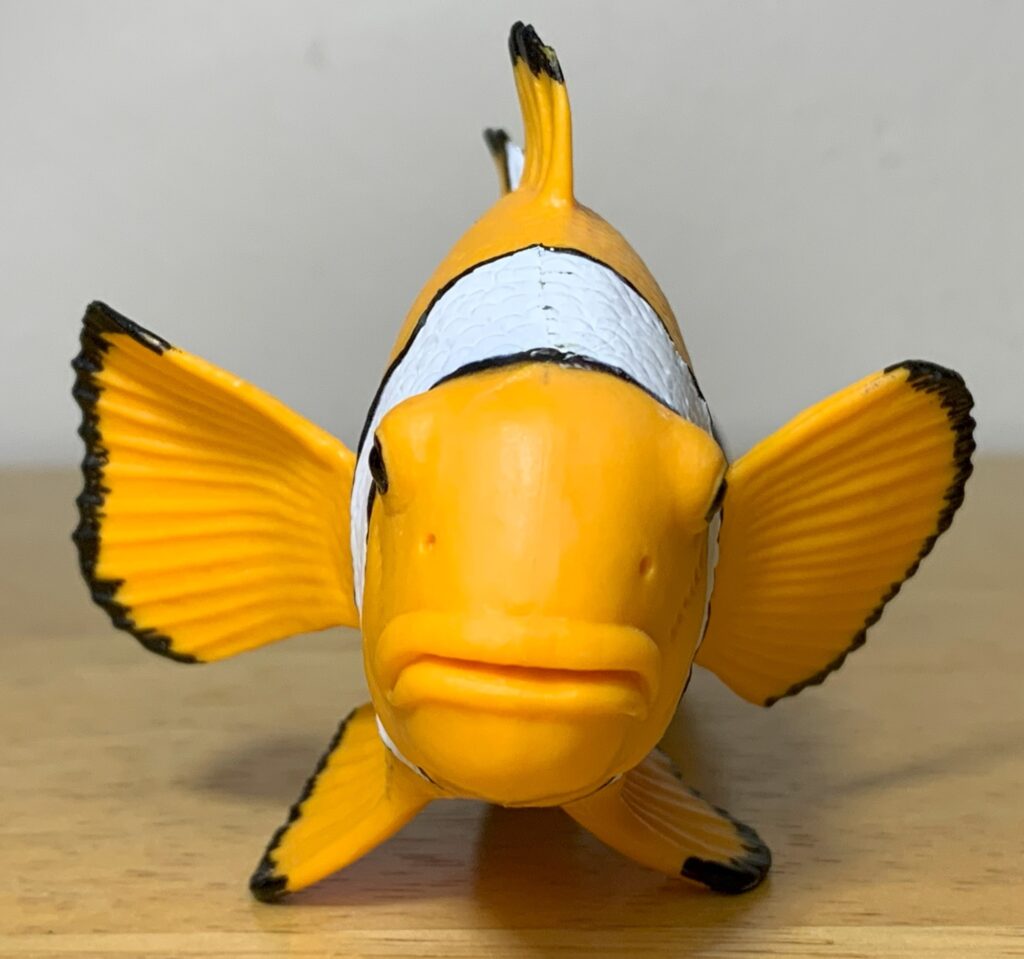
The figure is orange and white with thin black edges along the white bands and black edges along the fins. Clown anemonefish resemble orange clownfish but the latter has thicker black edges along its bands and this can be used to tell them apart. On the figure the white bands are located on the head, mid-section of the body, and around the caudal peduncle. The band on its body accurately bulges towards the head at its mid-section. In life, there are populations of clown anemonefish that are dark red-orange with white bands and black with white bands.
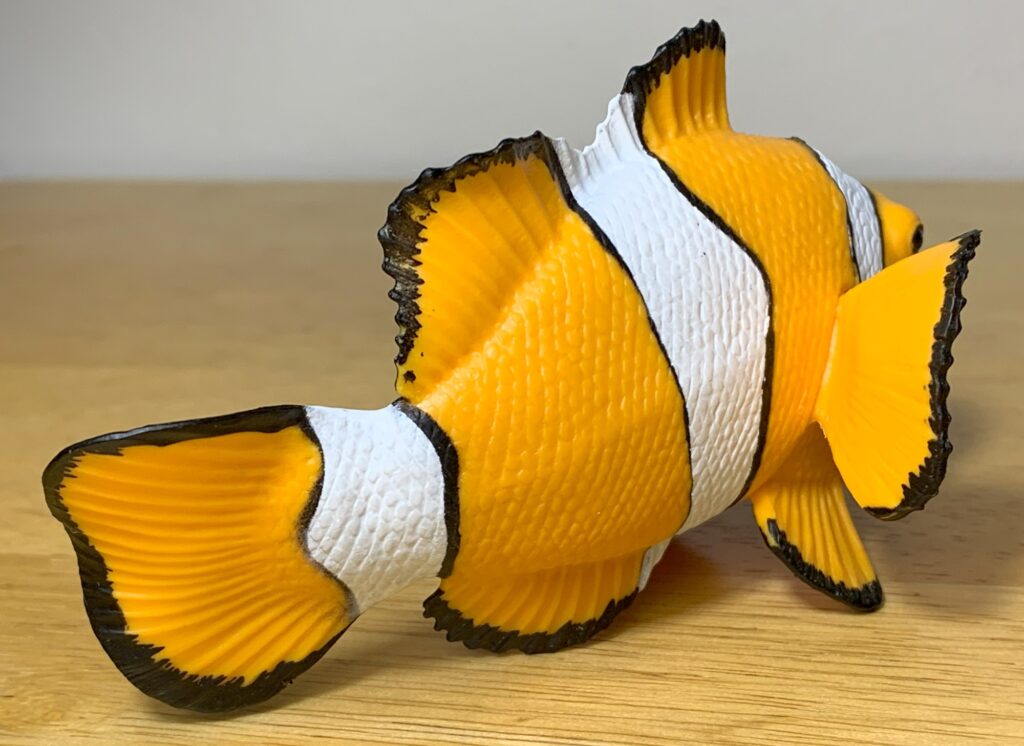
The Safari clown anemonefish is an excellent larger scale model of a popular fish that should appeal to fish and marine life collectors and if nothing else it should make for a fun bathtub or pool toy for kids. It’s no coincidence that it was also released alongside a blue tang and the two pair well together as well as with other Safari IC fish figures. This figure is currently available and retails for about $10-12.
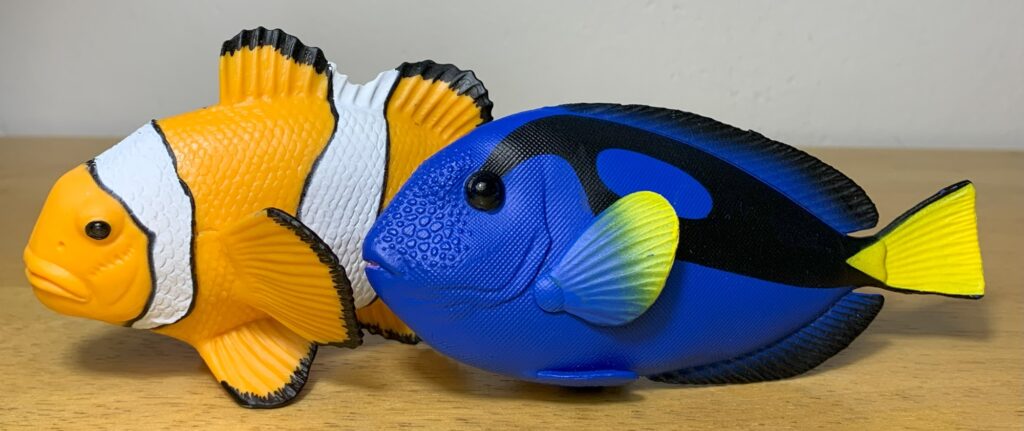
Disclaimer: links to Ebay and Amazon on the AnimalToyBlog are affiliate links, so we make a small commission if you use them. Thanks for supporting us!



